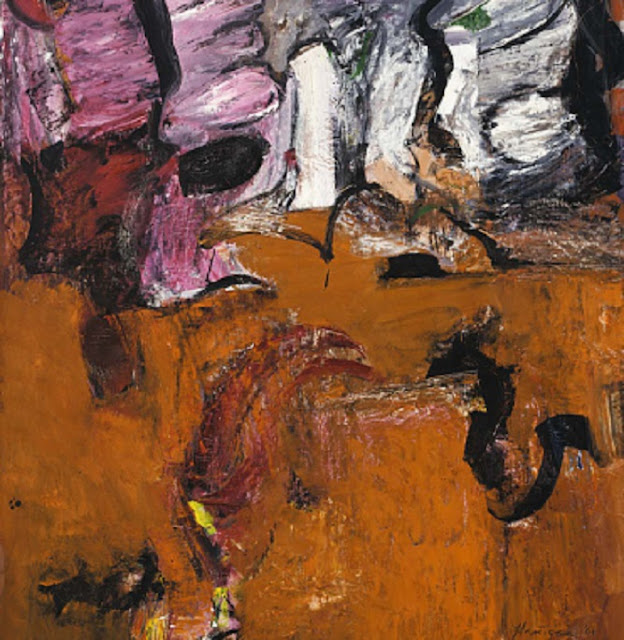American artist Grace Hartigan (1922-2008) was a second-generation abstract expressionist. A member of the New York avant-garde and a close friend of artists like Jackson Pollock and Mark Rothko, Hartigan was deeply influenced by the ideas of abstract expressionism. However, as her career progressed, Hartigan sought to combine abstraction with representation in her art. Although this shift garnered criticism from the art world, Hartigan was resolute in her convictions. She held fast to her ideas about art, forging her own path for the duration of her career.Hartigan’s first significant exposure to modern art came when a fellow draftsman offered her a book about Henri Matisse. Instantly captivated, Hartigan knew right away that she wanted to join the art world. She enrolled in evening painting classes with Isaac Lane Muse. By 1945, Hartigan had moved to the Lower East Side and immersed herself in the New York art scene.
A busy abstract surface is characteristic of Hartigan’s style, but whereas in much of her other work she allows imagery to form, here Hartigan intersperses her painterly strokes with selections of text taken from Frank O’Hara’s “Oranges No. 1.” The poem is one in a collection of twelve published in 1949 by O’Hara, in response to which Hartigan produced twelve canvases, each featuring excerpted text from the corresponding poem.
Throughout her life, Hartigan resisted the strictures of artistic fashion. The abstract expressionist movement shaped her early career, but she quickly moved beyond it and began inventing her own styles. She is best known for her ability to combine abstraction with representational elements. In the words of critic Irving Sandler, “She simply dismisses the vicissitudes of the art market, the succession of new trends in the art world. … Grace is the real thing.”














No comments:
Post a Comment